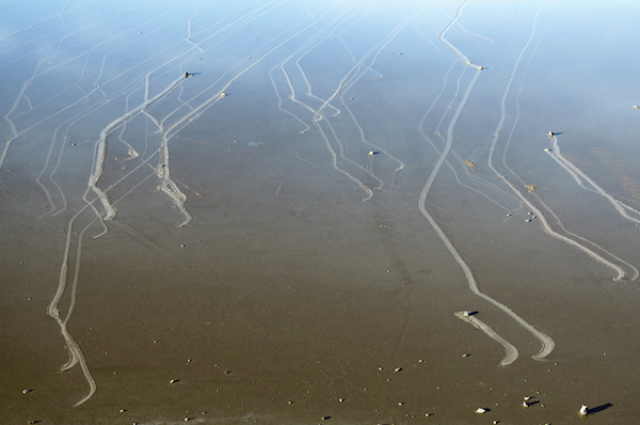How Death Valley’s Sliding Rocks Move

THE Mystery of Death Valley’s sliding rocks has been solved. Walkers in Death Valley stumble upon rocks lying at the end of trails. How did they move?
Scripps Institution of Oceanography, UC San Diego:
Racetrack Playa is home to an enduring Death Valley mystery. Littered across the surface of this dry lake, also called a “playa,” are hundreds of rocks – some weighing as much as 320 kilograms (700 pounds) – that seem to have been dragged across the ground, leaving synchronized trails that can stretch for hundreds of meters.
What powerful force could be moving them? Researchers have investigated this question since the 1940s, but no one has seen the process in action – until now.
In a paper published in the journal PLOS ONE on Aug. 27, a team led by Scripps Institution of Oceanography, UC San Diego, paleobiologist Richard Norris reports on first-hand observations of the phenomenon.
Because the stones can sit for a decade or more without moving, the researchers did not originally expect to see motion in person. Instead, they decided to monitor the rocks remotely by installing a high-resolution weather station capable of measuring gusts to one-second intervals and fitting 15 rocks with custom-built, motion-activated GPS units. (The National Park Service would not let them use native rocks, so they brought in similar rocks from an outside source.) The experiment was set up in winter 2011 with permission of the Park Service. Then – in what Ralph Lorenz of the Applied Physics Laboratory at the Johns Hopkins University, one of the paper’s authors, suspected would be “the most boring experiment ever” – they waited for something to happen.
But in December 2013, Norris and co-author and cousin Jim Norris arrived in Death Valley to discover that the playa was covered with a pond of water seven centimeters (three inches) deep. Shortly after, the rocks began moving.
“Science sometimes has an element of luck,” Richard Norris said. “We expected to wait five or ten years without anything moving, but only two years into the project, we just happened to be there at the right time to see it happen in person.”
Their observations show that moving the rocks requires a rare combination of events. First, the playa fills with water, which must be deep enough to form floating ice during cold winter nights but shallow enough to expose the rocks. As nighttime temperatures plummet, the pond freezes to form thin sheets of “windowpane” ice, which must be thin enough to move freely but thick enough to maintain strength. On sunny days, the ice begins to melt and break up into large floating panels, which light winds drive across the playa, pushing rocks in front of them and leaving trails in the soft mud below the surface.
Posted: 29th, August 2014 | In: Strange But True Comment | TrackBack | Permalink


